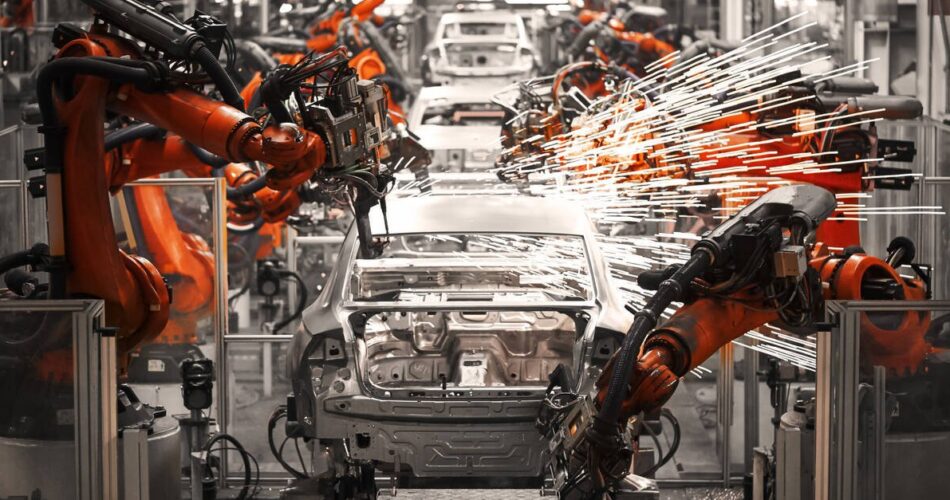Jaguar Land Rover, the custodian of those iconic British car brands owned by India’s Tata Motors, this week announced lost £9m in the final quarter of 2021 in part down to the global semiconductor shortage which followed the start of the COVID-19 pandemic.
JLR said retail sales fell nearly 38 per cent on a year earlier, although revenue was up by 22 per cent to £4.7bn.
The company said passenger car production in most markets had been hit by the continuing supply shortage of semiconductors. The shortages were likely to continue throughout 2022, it added.
“Whilst semiconductor supplies have continued to constrain sales this quarter, we continue to see very strong demand for our products underlining the desirability of our vehicles,” JLR’s chief executive Thierry Bolloré said in a statement.
It’s a problem the carmaker had been trying to avoid. In an interview with The Register last year, head of data and analytics Harry Powell described how his team had employed graph databases from TigerGraph to help understand supply chain challenges, including the chip shortage dogging the whole industry (see below).
Powell has since moved on to be head of industry solutions at TigerGraph. There could be many reasons why JLR continued to struggle with a chip shortage and maybe it would have been worse without the efforts of the analytics team.
For sure, a string of other automakers continue to be hit by the problem. Earlier this week, General Motors said its annual revenues of $123bn were down 11 per cent year on year, as the pandemic and chip shortages continued to bite.
Chairman and CEO Mary Barra told an investor call that problems were ongoing, but lessening.
“We’re definitely seeing improvement in the first quarter over the fourth quarter. We saw the fourth quarter better than the third quarter. We really see with the plans we have in place now, we’re going to be really starting to see the semiconductor constraints diminish,” she said.
Car buyers paying over sticker price for new cars
In the US, new and used car prices are continuing to be pushed higher as the waiting list grows against a backdrop of tight inventory. While the slowdown in manufacturing caused by the chip supply crunch eased somewhat at the beginning of the year, there won’t be a return to normal anytime soon for car buyers. “This pent-up demand will keep inventories low and prices high throughout most of 2022,” Tyson Jominy, head of data and analytics for JD Power, told CNBC this week.
According to analysts who spoke to the US news outlet, the average transaction price is nearly half a grand higher that the MSRP: $45,872 vs $45,209, with nearly 90 per cent of punters paying over sticker price.
Announcing results last week, Volvo said it saw sales fall by 20 per cent amid the chip shortage.
Speaking to investors, Martin Lundstedt, CEO, said: “The fourth quarter was yet another quarter characterised by the shortages of material, mainly related to semiconductors and also then the lack of capacity, including freight.”
Industry newcomer Tesla was also affected by the chip shortage, although self-proclaimed rock-star tech leader Elon Musk said the effect was declining.
“We still expect to be part or primarily chip-limited this year and that chip limitation should alleviate next year,” he told investors.
Musk said the company had spent some time re-engineering its vehicles to help mitigate the problem including rewriting code, changing chips designs and reducing the number of chips required for each vehicle.
“It’s hard to predict 2022 because we still have lingering supply chain issues, globally. But I think at least the chip side of things appears to look like it will alleviate end of this year or 2023. I mean, there are a crazy number of chip fabs being built, which is great,” Musk said.
Nissan too has seen sales volume lower than expected mainly due to the impact of the semiconductor supply shortage.
But not all automakers appear to have been hit as hard as JLR, GM, Volvo, Tesla and Nissan were.
Toyota has fared better, although it has not avoided problems all together. It saw a 48 per cent increase in operating profit on flat sales, largely side-stepping the chip crisis. CFO Kenta Kon said improved inventory management had contributed to the results.
In April last year, Toyota president Akio Toyoda told the Japan Automobile Manufacturers Association said, “very close communication between automakers, chipmakers, and the part suppliers that rely on those chips” had proved important.
Meanwhile bolstered inventories and improved supply chain control had put it in a better position than competing automakers, according to Bloomberg.
The newswire quoted Nakanishi Research Institute head Takaki Nakanishi describing how the Japanese auto-giant carefully manages its supply chains to help avoid pandemic-related disruptions.
Ths hails back to lessons learned from the 2011 tsunami which hit Japan causing large-scale industrial damage, including nuclear facilities. Semi-conductor supplies were also hit.
It even caused Honda to halt production on the other side of the world, shutting down car production in Swindon in the UK as it grappled with supply shortages.
In the intervening decade, Toyota came up with a list of about 1,500 parts to stockpile or source alternatives for. It also executed a plan to monitor the vast network of suppliers that produce those items and develop an early-warning system for shortages.
But it is not like the warnings were not there. A paper [PDF] from Imperial College London recommended manufacturers to “look deep within your supply chain. Tier 1 is not enough.”
It might be an interesting thought experiment to forecast who, 10 years from now, will have learned the supply chain lessons from the pandemic. ®
Source link



